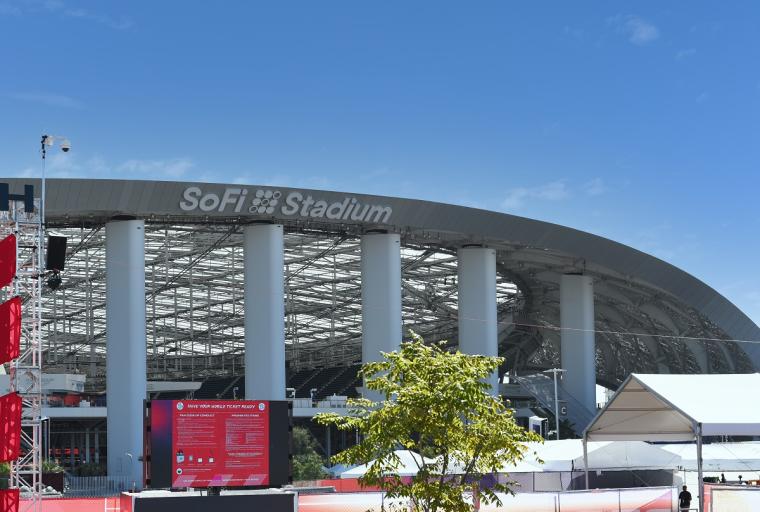
SoFi Stadium in Los Angeles wants to host the 2026 World Cup final, but it has a big problem: Its field, built for football, is too narrow for international soccer.
How much wider does it need to be? A considerable amount: 63 feet. And removing seats to widen the field (the most expedient way of solving the problem) creates another in that it takes the overall capacity of the stadium below the FIFA minimum of 80,000. That could put it out of the running to host that big match.
According to the Daily Mail, there was a reported attendance of 88,966 for Argentina's win over France in December, while 78,011 turned up to watch France beat Croatia in 2018.
And it hasn’t escaped anyone’s notice that FIFA, which claimed to have done extensive site research, and has made in-person visits to all the facilities that were vying to host, still awarded matches to a city where the field was too narrow. And oh, by the way, FIFA itself, back in 2022, outright told SoFi the dimensions of its field were all wrong. (And by the way, SoFi has a capacity of 70,240, rather than 80,000.)
So how did L.A. wind up being awarded World Cup matches? Yahoo! didn’t pull any punches, noting, “It’s odd, frankly, that this issue didn’t emerge before SoFi became widely regarded as one of the three potential places where the match could be played. It may just be a leverage play aimed at getting better terms for the World Cup Final, whether from SoFi or from one of the other finalists. FIFA seems to know a thing or two about getting the best possible deal. Allegedly. Or actually.”
Front Office Sports says “the irony isn’t lost on soccer fans, who are questioning how Los Angeles Rams owner Stan Kroenke, also the owner of the Premier League club Arsenal, could have allowed for such a snafu.”
Of course, here in the USA, the problem of field dimensions is all too familiar to high schools. As communities become increasingly landlocked, many schools’ stadiums host multiple sports, including football, soccer, field hockey and lacrosse. And that means the field has to be long enough to accommodate the longest sports field, and wide enough to accommodate the widest.
 It’s harder than it sounds, when you consider a football field is 53-1/2 yards wide, while a soccer field can be up to 80 yards wide. Lacrosse and field hockey fields are 60 yards wide (all NFHS dimensions.) Add a running track on the perimeter of the field and you have spectators seated at quite a distance from much of the action, something that always causes complaints.
It’s harder than it sounds, when you consider a football field is 53-1/2 yards wide, while a soccer field can be up to 80 yards wide. Lacrosse and field hockey fields are 60 yards wide (all NFHS dimensions.) Add a running track on the perimeter of the field and you have spectators seated at quite a distance from much of the action, something that always causes complaints.
By the way, higher levels of competition demand different (larger) dimensions, and international soccer play is no exception.
There are certainly other venues on FIFA’s list that can take the place of SoFi as a potential host for the final. According to Yahoo!, AT&T Stadium in Dallas (capacity 80,000) and MetLife Stadium in New Jersey (82,500) are among the frontrunners. AT&T also has a retractable roof (MetLife does not), something that could push it across the finish line when it comes to hosting the final in the summer of 2026.
Whether that will happen, though, is anyone’s guess. After all, this is FIFA, whose officials’ moral flexibility is the stuff of legend.
The world is hoping for a new start for FIFA in 2026. This will be a big World Cup in every way. Not only is it being hosted by three nations (Canada, Mexico and the USA) but it will mark the first edition of the tournament to feature 48 teams, up from 32.

